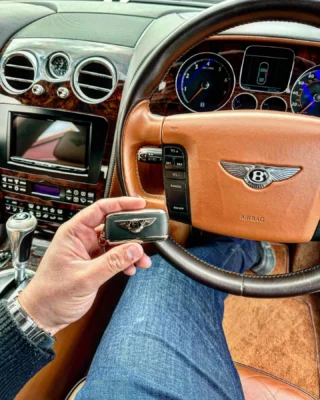20 Trailblazers Setting The Standard In Door Lock Repair
Comprehensive Guide to Car Door Lock Repair: Troubleshooting and Solutions
The stability and performance of a vehicle's door locks are important for both the security of the car and the safety of its residents. Car door locks can experience a variety of concerns, varying from small mechanical glitches to complete failures. car key replacement locksmith seeks to supply an informative overview of car door lock repair, detailing common problems, diagnostic procedures, and solutions.
Comprehending Car Door Locks
Before delving into repair treatments, it is crucial to understand the components of a typical car door lock. There are two main types of locks: mechanical and electronic.
Components of a Car Door Lock System
- Lock Cylinder: The part where the key is inserted.
- Latches: Mechanisms that hold the door shut.
- Actuator: Electric motor in electronic locks that helps in locking and unlocking.
- Linkage: Connects the lock cylinder to the latch.
- Remote Key Fob: In electronic systems, this is used to lock and unlock the doors from a range.
Typical Issues with Car Door Locks
Car door locks can stop working for a wide range of reasons. Here are some typical problems experienced by vehicle owners:
- Sticking or Frozen Locks: Especially in winter, locks can become challenging to operate.
- Lock Not Engaging or Disengaging: Both mechanical and electronic locks can face concerns where they do not react to the key or remote.
- Key Jams: The key may get stuck in the lock, making it impossible to lock or unlock the door.
- Remote Malfunction: In electronic systems, the key fob might not work due to battery problems or programming issues.
- Physical Damage: Vandalism or mishaps can harm the lock system.
Fixing Car Door Lock Issues
When a car door lock is not working correctly, it is essential to diagnose the issue properly before continuing with a repair. Below are steps that can assist repair the problem:
Step-by-Step Troubleshooting
Visual Inspection:
- Check the door lock and surrounding parts for noticeable damage.
- Examine the key for wear and tear.
Test the Key:
- If the lock is sticking or not engaging, try using a spare key if offered.
- Guarantee the key is clean from dirt and debris.
Check the Actuator:
- Listen for any sounds when pressing the key fob. A clicking sound may show a malfunctioning actuator.
Examine Door Wiring:
- Check the electrical wiring that connects the door lock to the vehicle's electrical system.
- Try to find disconnected or frayed wires.
Temperature Influence:
- If the lock is sticking in cold weather condition, use lithium grease to help oil the system.
Fixing Common Door Lock Issues
Once the problem has actually been diagnosed, the repair can begin. Here are some common repair strategies for numerous issues:
Fixing a Sticking or Frozen Lock
- Cleaning: Use a graphite lube or silicone spray to tidy and lube the system.
- Heating: If frozen, utilize a hairdryer to warm the area around the locking mechanism carefully, avoiding getting too hot.
Repairing a Lock Not Engaging/Disengaging
Lock Cylinder Replacement:
- If the lock cylinder is worn, consider replacing it. This frequently includes spying off the door panel to access the lock system.
Actuator Replacement:
- For electronic locks, if the actuator is defective, it will need replacement. Make certain to disconnect the battery before trying this repair.
Fixing a Jammed Key
- Extraction Tool: If a key is stuck, utilize a set of needle-nose pliers to carefully pull it out, or a key extractor.
- Lock Lubrication: Apply a little amount of lube to alleviate the process.
Remote Key Fob Malfunction
- Battery Replacement: Most remotes have changeable batteries. Follow the maker's guidelines to replace the battery.
- Reprogramming: Sometimes, the remote needs to be reprogrammed. Describe the vehicle's manual for actions to reprogram the key fob.
Physical Damage Repairs
- Door Lock Assembly Replacement: If the lock is physically damaged, complete replacement of the lock assembly might be needed.
- Expert Help: If uncertain about DIY repairs, look for support from a licensed mechanic.
Maintenance Tips for Car Door Locks
To lengthen the life of car door locks, regular maintenance is necessary. The following practices can help preserve optimal efficiency:
- Regular Lubrication: Apply appropriate lube to the locks every few months.
- Keep Keys Clean: Regularly tidy the car keys to avoid dirt buildup.
- Prevent Excessive Force: Do not use extreme force when locking or unlocking; this can trigger damage in time.
- See for Signs of Wear: Be mindful to any modifications in the lock's performance and address concerns immediately.
FAQs about Car Door Lock Repair
Q: How can I inform if my door lock is broken?A: Common
signs consist of the lock not engaging or disengaging, a jammed key, sounds from the door when using the key fob, or visible damage to the lock assembly.
**Q: Can I repair a car door lock myself?A: Yes, lots of simple problems can be attended to by following the repairing steps in this article, however complex issues might need expert assistance. Q: What type of lube should I use
**for my locks?A: It is best to use graphite powder or silicone-based lubricants given that oil can bring in dirt and gunk. Q: How much does it normally cost to change a car door lock?A: The cost can differ widely
based upon the vehicle's make and design, however typical replacement expenses
can vary from ₤ 100 to ₤ 300, consisting of labor. Car door lock repair can seem complicated, but comprehending the elements and common concerns can make the process much more manageable. Whether dealing with small repairs yourself or looking for professional support for more significant concerns, keeping the door locks working effectively is important for vehicle security and safety. Regular upkeep and prompt attention to issues can considerably extend the life of your car's locking system.  ****
****